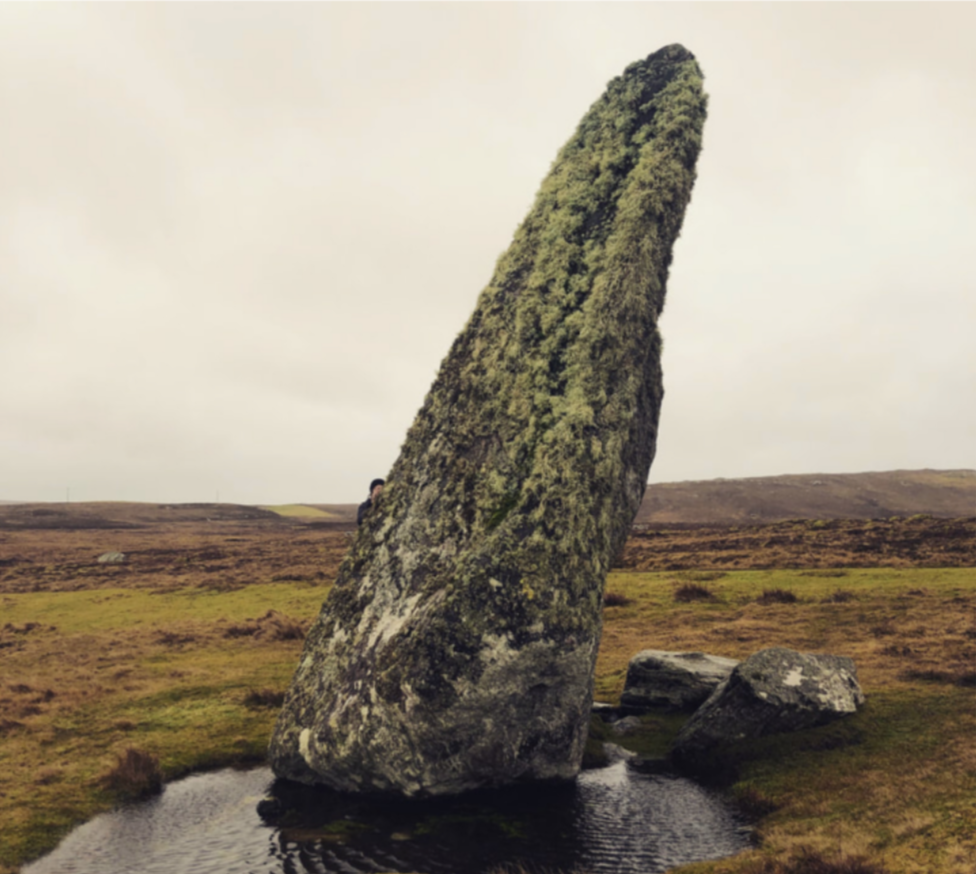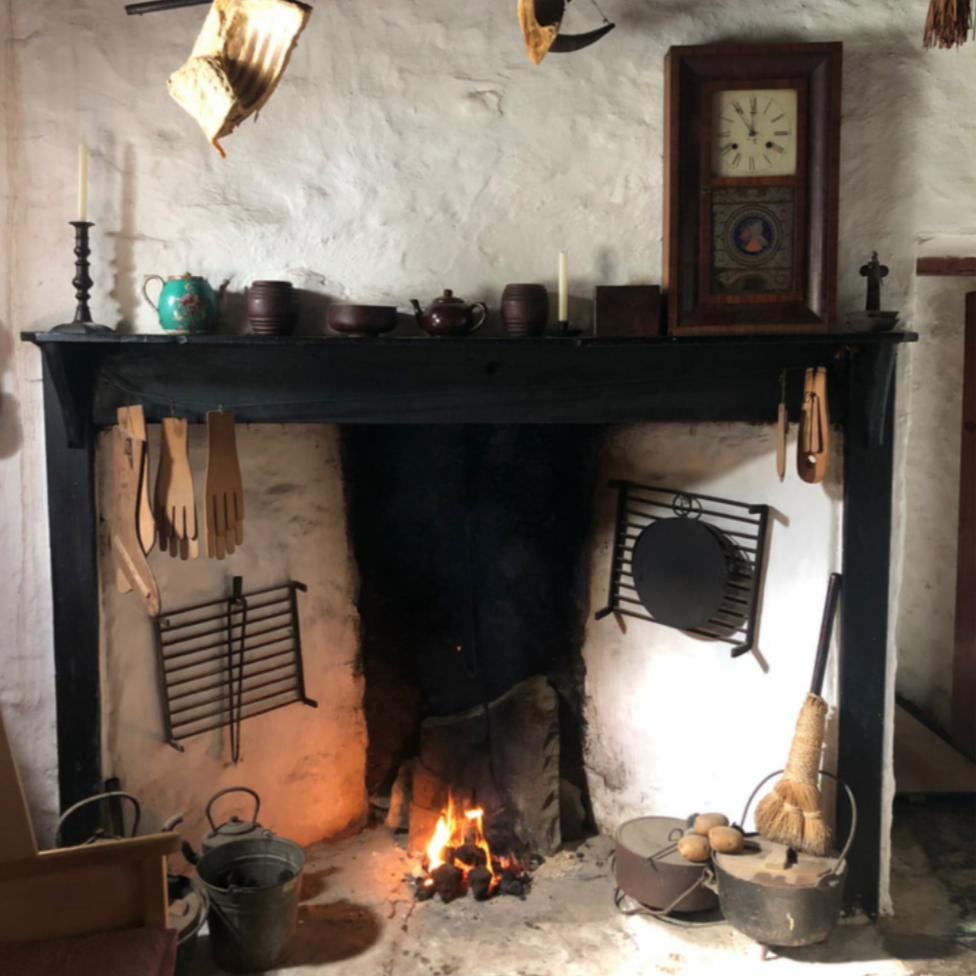Shetland folklore series: Trows
Folklore was a huge part of Shetland’s society and culture in pre-modern times. Many of the folktales have been written down and, although many have now been forgotten, they can still be found in books and literature.
The dramatic coastline and moorland expanses have given rise to a rich and deep-rooted culture of folklore, superstition and deeply-embedded traditions.
In the past, education, literature and access to news was limited, even within the isles. Travel for pleasure was almost unheard of, and a venture out into the neighbouring parish or district was a novelty. Friends and neighbours, particularly in winter, would gather together beside the fireside and share stories and tales of the past to occupy the long winter nights. This series of blogs will explore some of these stories.
Trows dancing at Haltadans. Illustration by Davy Cooper.
One of the most common and best-loved tales from Shetland’s folklore are those about the trows, or little people, who live in the hills. These hill-folk are much revered across the isles, and even today, they appear in stories and popular culture.
Trows are a feature of Shetland folklore, they are creatures, similar to humans but smaller and uglier who lived in the hills, particularly the heathery peatlands inland from the sea. They would only come out at night to work mischief in the human world. If a trow was to get caught out by the rising sun, it would turn to stone before it was able to get back to its underground layer. Many of Shetland’s standing stones are said to be petrified trows.
Standing stones are often thought to be petrified trows
Many of Shetland’s place names indicate areas associated with the trow; there is Trolladale, Trolligart and Trollhoulland. There are also plants that have trowie names; ferns are known as trow’s cairds [wool cards], heath rush is the trow bura and foxglove is a trowie glive [glove]. The trows themselves were often named, popular names include Peesterleetie, Trunsher Face, Terrie Mittens and Tivla.
Trows are invisible to most people, but some could seek help to see them. A man in Papa Stour was able to see the trows dancing in front of his house by holding his wife’s hand or placing his foot over hers.
Trows are said to have particularly loved fiddle music, and much of our traditional music is thought to have been learned from the trows and the people who were taken by them or heard the music emitting from their underground knowes [small hill/knoll]. Trows are said to have taken fiddlers on many an occasion, usually when the person was travelling to or from a musical engagement, particularly weddings. Trows are reported to appear and take them away to play at trowie gatherings. The musician would sometimes be gone for days, months, years or even decades and, on returning, would believe their absence to be no more than a few hours. They may return home with no idea of the passing of time to find that a generation or more had passed.
Some fiddlers were sworn to secrecy not to divulge their whereabouts to the human world, many of them would enjoy considerable good fortune as a result, with crops flourishing, livestock numbers growing and good fortune at the fishing. However, if they spoke of the trows this fortune would be revoked and they would, almost certainly, land up in severe poverty with failing health and fortunes.
A fiddler carrying his instrument. Photo: Alexa Fitzgibbon
This is because trows were not always out to wreak havoc on people; if you were good to them, they would, in turn, be good to you and act as protectors to you and your family. Trows abhorred mess and disorder so people would be sure to leave their homes clean and orderly before they went to bed, so as not to offend ‘da guid folk’ – another name given to the trows. A daffik [pail] of water was always left out before bed, incase a trow should come in need of it and people went to great lengths to appease the trows. It was not always the case that trows were harmless or just mischievous – in some instances, they could be dangerous and they were regarded with equal amounts of fear and awe.
Trows would sometimes take healthy babies and children – and sometimes adults – leaving in their place, an ailing child that was said to be ‘ill-triven’. The healthy child was taken and the ailing changeling would be all that was left to greet the grief-stricken parents in the morning. For this, a ‘trowie doctor’ was needed, or a wise woman with the gift of healing powers who could perform a ritualistic ceremony to break the trowie spell.
Women in their childbirth bed; either expecting or post-partum were in particular danger from the trows and should never be left unsupervised for fear that they might be taken by the trows. Some stories report that unattended women were taken and that a dead effigy of the woman was left in her place. We have to remember that childbirth at this time was extremely dangerous and many women were lost in childbirth and the days that followed. This reference to trows may have been a way to explain why an outwardly healthy woman should be taken at this precious time. Modern medicine has much-improved mortality rates and, as a result, we see far fewer instances of women – and infants or children – being taken by the trows…
But, this doesn’t explain the many stories of women and children who were reunited with their families many months or years after they were lost to the trows and replaced with a lifeless changeling. This same scenario would play out with animals and livestock; particularly cows, but sometimes sheep too.
Animals, particularly cows, had to be guarded from the trows and would often fall under a trowie spell.
Trows were to be particularly guarded against in the lead up to Yule [Christmas] celebrations
. At this time of the year they would become particulalry active, more demanding and exceedingly mischievous. Yule maet [meat] was a particular favourite of the trows and, in order to protect the food against the trows, a steel knife or fork was often left in the flesh before Yule Day as trows could not cross steel.
In general, methods to ward away trows were simple; a bible or steel object would do. If a trow approaches you on the hill, the best protection is to take out a knife and draw a circle around yourself – this circle, the trow can’t enter.
There are those who believe that trows still live in Shetland, and whether there are or not is not for me to pass comment on. Most of the trows are thought to have left the islands in the latter part of the 19th century when religious preaching was at its height. The trows abhorred religious doctrine, and these preachings drove them away.
Interior of the Crofthouse Museum with a peat fire.
I will bring you more folklore stories on the blog over the coming months and, in the meantime, remember to watch out for the trows!









